Growing up in Bataan, my Lola Norma would send me to our backyard every afternoon to pick fresh kangkong for dinner. I'd come back with muddy hands and a basket full of those beautiful green leaves, and she'd turn them into the most refreshing salad.
Now, whenever I walk to my own backyard and see kangkong growing wild by our fence, I can't help but smile and think of her. This kangkong salad with salted egg is exactly like hers: simple, fresh, and bursting with that perfect tangy flavor that makes you want seconds.
The best part? You probably have most of these ingredients at home already, and it takes just 15 minutes from garden to table.
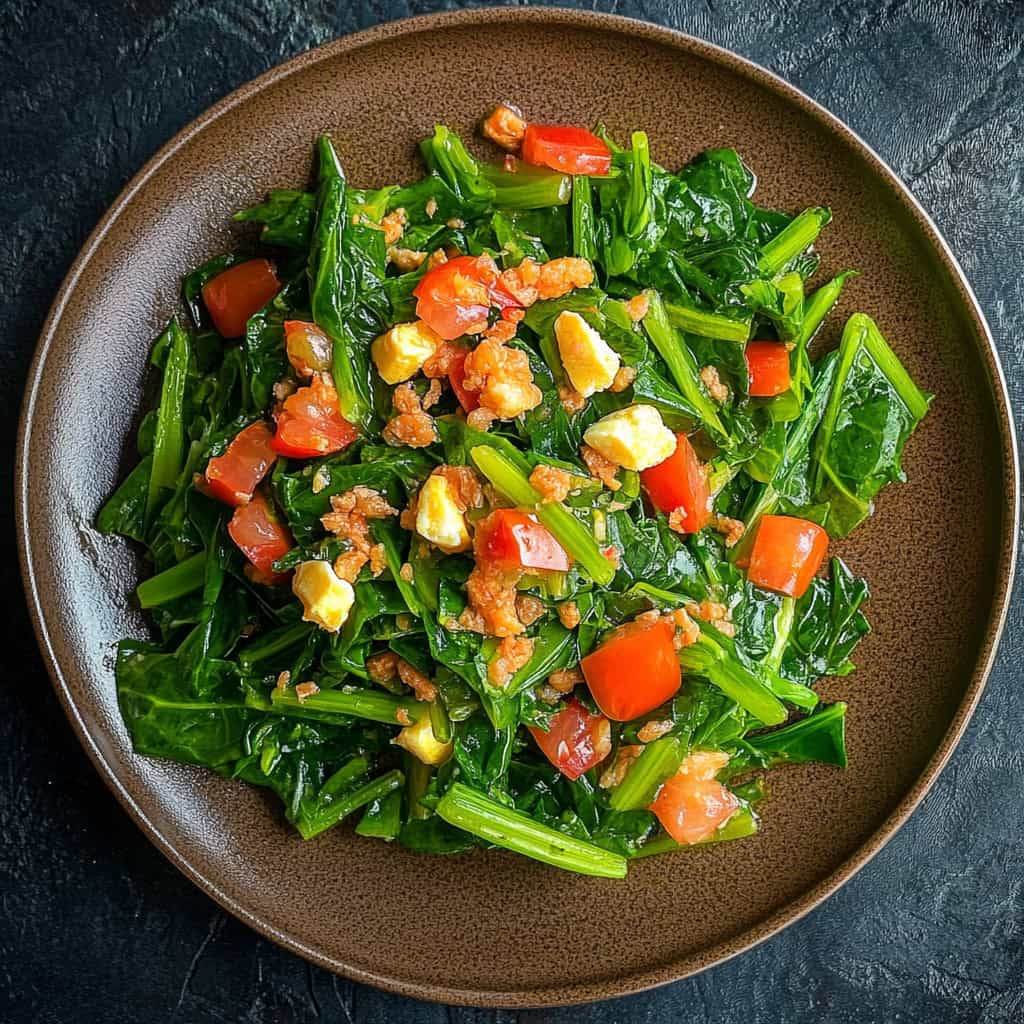
Why You'll Love This Recipe
This kangkong salad with salted egg is the perfect balance of fresh, tangy, and savory flavors that will transport you straight to a Filipino family dinner. You'll love how incredibly simple it is to make - just blanch the greens, chop your ingredients, and toss with a zesty dressing.
The creamy salted egg adds richness while the bright calamansi dressing keeps everything light and refreshing. It's budget-friendly, nutritious, and can be served warm or cold, making it ideal for meal prep or hot summer days. Plus, it pairs beautifully with any fried or grilled dish, adding that fresh vegetable component your meal needs.
Jump to:
Ingredients
- 1 bundle kangkong (water spinach), about 1 pound
- 4 medium fresh tomatoes, chopped
- 1 medium red onion, minced
- 1 thumb-sized piece fresh ginger, peeled and minced
- 1-2 salted eggs, shells removed and chopped
- ½ cup white vinegar
- ½ cup calamansi juice (or lemon juice)
- ¼ teaspoon granulated sugar
- Salt and black pepper to taste
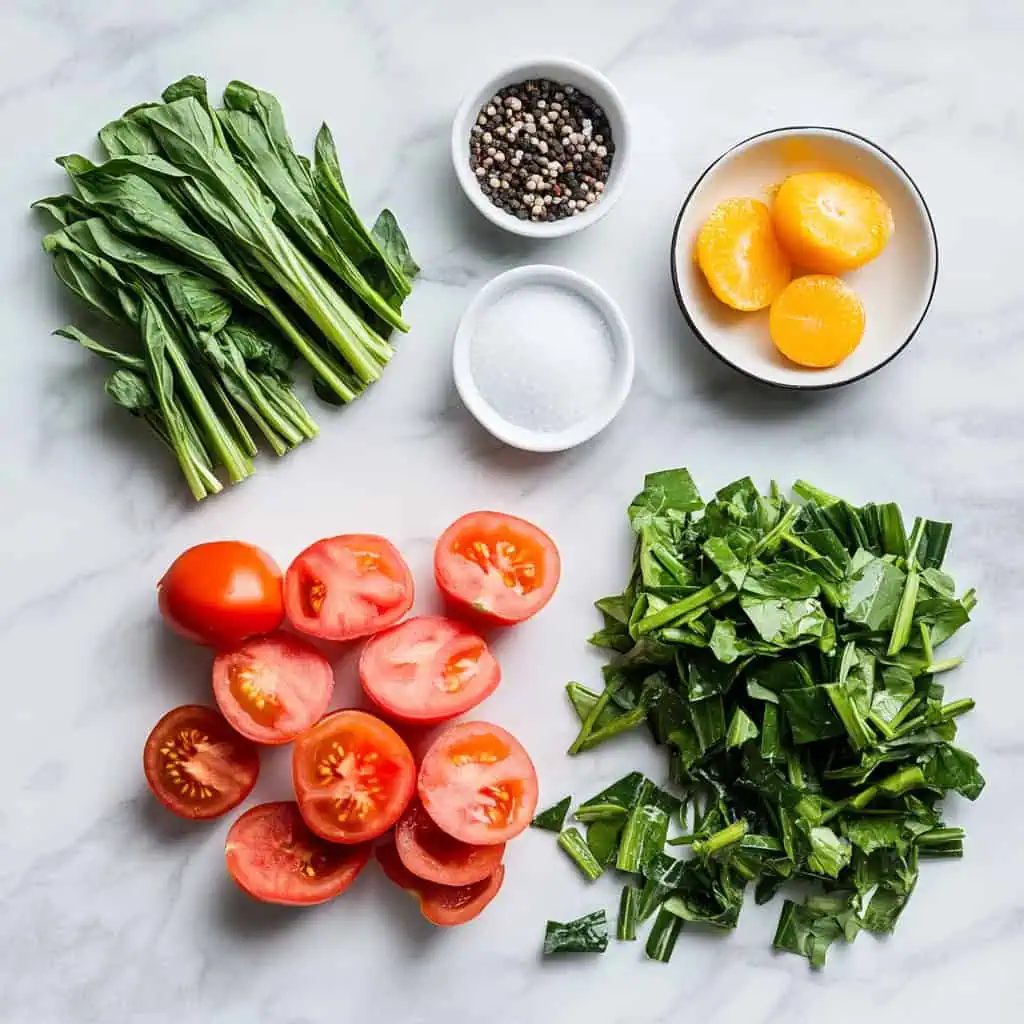
Kangkong provides the perfect tender-crisp base that holds up beautifully to the tangy dressing without becoming soggy. The salted egg adds creamy richness and umami depth that balances the bright acidity from the calamansi and vinegar.
Fresh tomatoes bring sweetness and juiciness, while red onion adds a sharp bite that mellows once dressed. The ginger provides a subtle warmth that ties all the flavors together, creating that authentic Filipino taste profile that's both refreshing and satisfying.
Equipment
- Large pot - for boiling water to blanch the kangkong quickly and evenly
- Large bowl with ice water - stops the cooking process immediately to keep kangkong crisp and bright green
- Sharp knife - for cleanly chopping tomatoes and salted eggs without crushing them
- Cutting board - provides stable surface for safe ingredient preparation
- Large serving platter - allows you to arrange the salad attractively for presentation
- Small mixing bowl - for whisking dressing ingredients until well combined
- Tongs or slotted spoon - for safely removing kangkong from boiling water
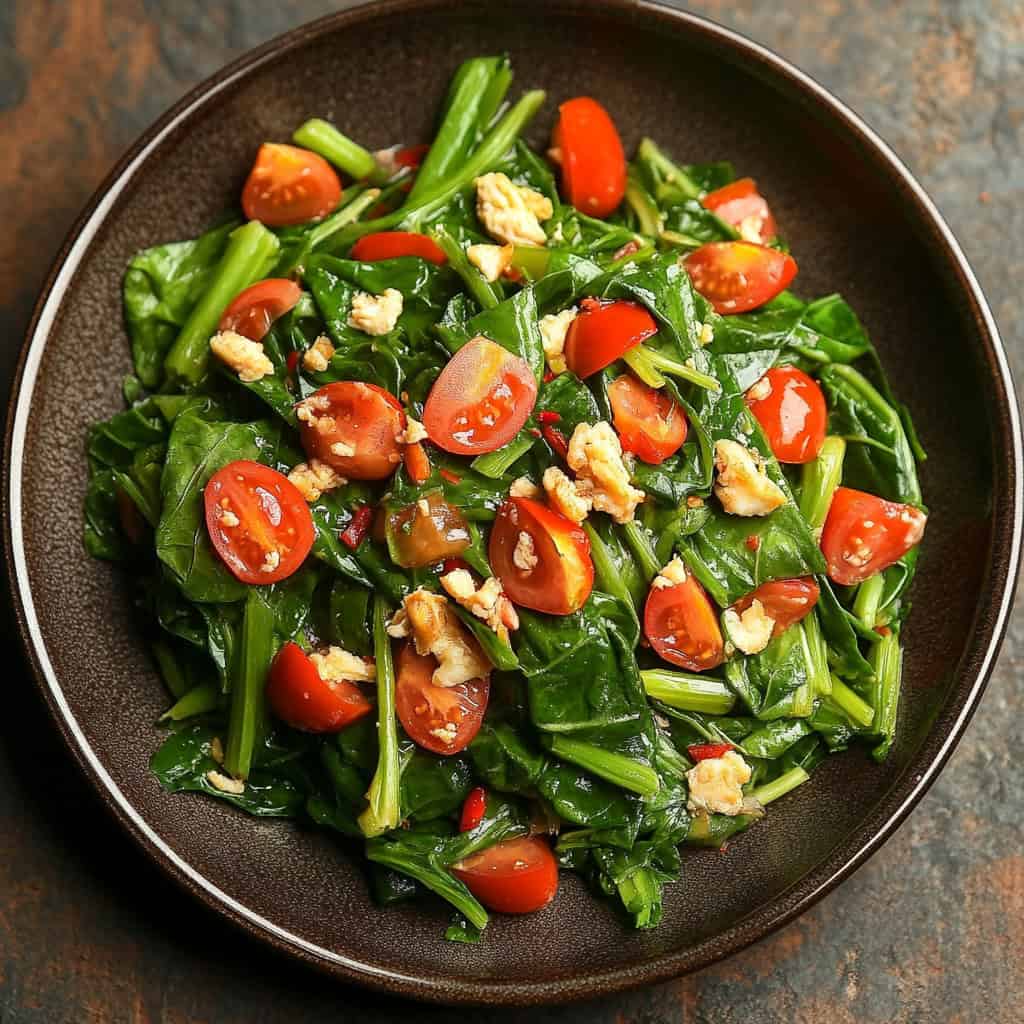
How To Make
- Thoroughly rinse the kangkong under cold running water, gently rubbing the leaves to remove any dirt or grit. Remove the thick stems if you prefer, or keep them for extra crunch - just know they'll need a few extra seconds of cooking time.
- Fill your large pot with water and bring it to a rolling boil over high heat. While waiting, prepare your ice bath by filling a large bowl with cold water and plenty of ice cubes.
- Once the water is boiling vigorously, carefully add the kangkong leaves. If you kept the stems, add them first and let them cook for 10-15 seconds before adding the leaves. Blanch everything for 20-40 seconds total - the leaves should turn bright green and be tender but still have a slight bite.
- Immediately use your tongs to transfer the kangkong from the boiling water straight into the ice bath. This shock stops the cooking process and keeps your greens perfectly crisp and vibrant. Let them sit in the ice water for about 2 minutes.
- Once the kangkong is completely cool, drain it well and gently squeeze out excess water with your hands. Arrange the blanched kangkong on your serving platter, creating an attractive base for your toppings.
- Scatter the chopped tomatoes, minced red onion, minced ginger, and chopped salted eggs evenly over the kangkong. Try to distribute everything so each serving gets a good mix of all the components.
- In your small mixing bowl, whisk together the vinegar, calamansi juice, sugar, and a pinch of salt and pepper. Taste and adjust - you want a good balance of tangy and slightly sweet that complements but doesn't overpower the vegetables.
- Drizzle the dressing evenly over the entire salad, then gently toss everything together with clean hands or serving utensils. Make sure every piece of kangkong gets coated with the flavorful dressing.
- Serve immediately while the kangkong is still slightly cool from the ice bath, or chill in the refrigerator for 30 minutes if you prefer it completely cold. This salad is delicious either way.

Tips from Lola's Kitchen
- Watch your kangkong like a hawk when blanching - overcooked greens turn mushy and lose their beautiful color
- Save some of the kangkong cooking water for your garden - it makes excellent plant fertilizer
- I always make extra dressing and keep it in the fridge for quick salads throughout the week
- For the crispest results, spin your blanched kangkong in a salad spinner after the ice bath
- Room temperature salted eggs are easier to chop cleanly than cold ones straight from the fridge
- Add the dressing just before serving to prevent the kangkong from getting soggy
Substitutions
- No calamansi? Lemon juice works perfectly, or try a mix of lime and lemon for more complexity
- Can't find kangkong? Baby spinach or watercress make good substitutes, though cooking time will be shorter
- No salted eggs? Crumbled feta cheese or hard-boiled eggs with extra salt give similar richness
- Want more protein? Add cooked shrimp, flaked fish, or diced tofu
- Prefer sweeter dressing? Increase sugar to ½ teaspoon or add a touch of honey
- Need it spicier? Mince in some fresh chilies with the ginger
Troubleshooting
- Kangkong turned out mushy? You blanched too long - next time, cut the cooking time in half
- Salad tastes too sour? Add more sugar, a pinch at a time, until balanced
- Vegetables look wilted after dressing? The acid in the dressing naturally softens vegetables - this is normal and still delicious
- Dressing seems too thin? Whisk in a tiny bit more sugar to help it cling better
- Salted eggs taste too salty? Rinse them lightly under cold water before chopping
Storage & Reheating
- Refrigerator: Store covered for up to 2 days, though it's best eaten fresh
- Freezer: Not recommended - the vegetables lose their texture when thawed
- Make-ahead tip: Blanch kangkong and prep all ingredients up to 1 day ahead, but dress just before serving
- Leftover magic: Mix leftovers into fried rice or use as a filling for lumpia
- No reheating needed: This salad is meant to be served cold or at room temperature
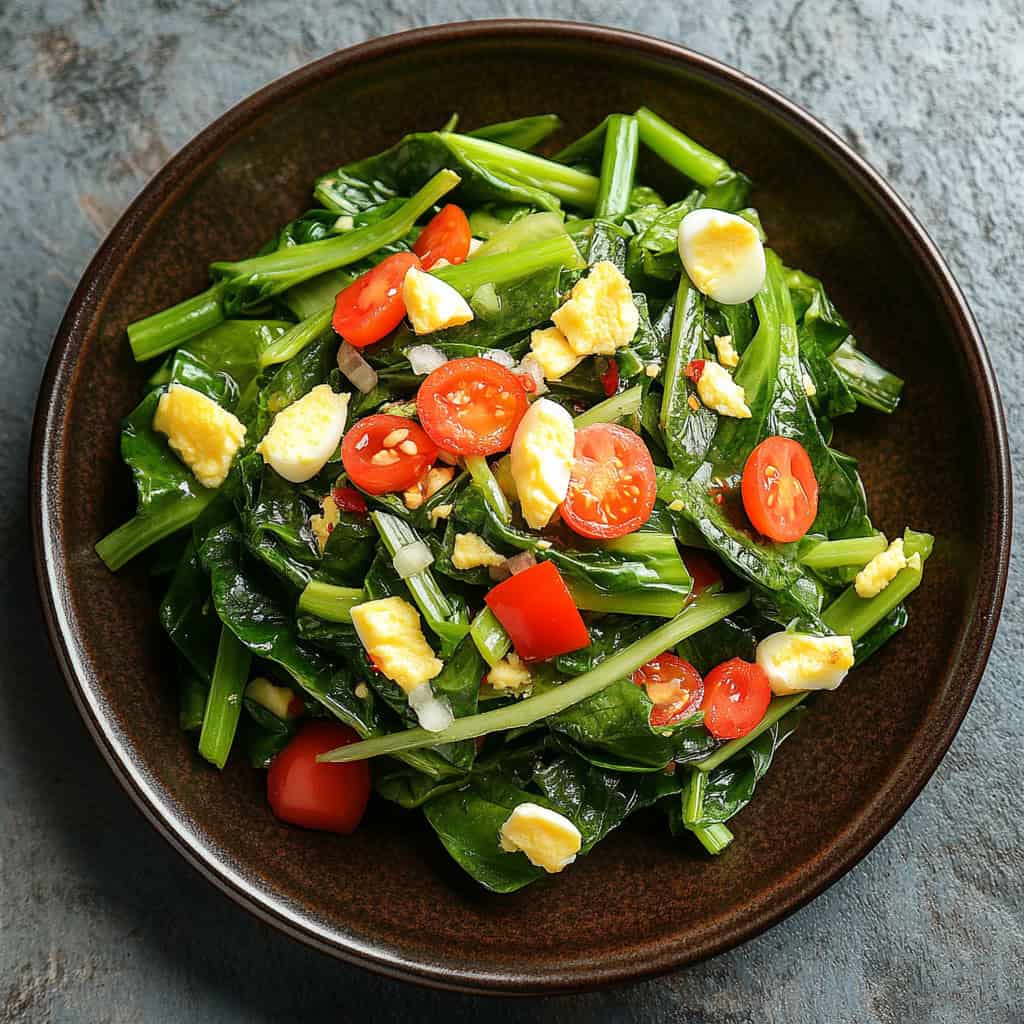
FAQ
Can I use frozen kangkong?
Fresh is always better. But if using frozen, skip the blanching step and just thaw completely
How do I know if my salted eggs are good?
They should smell briny but not fishy, and the yolk should be firm but not hard
Is this salad keto-friendly?
Yes! It's naturally low-carb and fits perfectly into a keto diet
Can kids eat this?
Absolutely! You might want to reduce the onion and ginger for sensitive palates
What's the best way to wash kangkong?
Soak in cold water for 5 minutes first, then rinse under running water while gently rubbing the leaves
Can I add other vegetables?
Cucumber, bell peppers, or bean sprouts all work wonderfully in this salad
Related
Looking for other recipes like this? Try these:
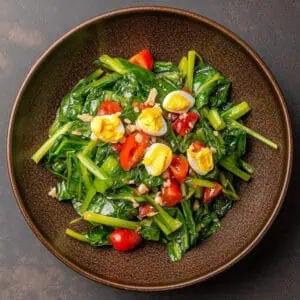
Fresh Kangkong Salad with Salted Egg: A Classic Filipino Side Dish
Ingredients
- 1 bundle kangkong water spinach, about 1 pound
- 4 medium fresh tomatoes chopped
- 1 medium red onion minced
- 1 thumb-sized piece fresh ginger peeled and minced
- 1-2 salted eggs shells removed and chopped
- ½ cup white vinegar
- ½ cup calamansi juice or lemon juice
- ¼ teaspoon granulated sugar
- Salt and black pepper to taste
Instructions
- Thoroughly rinse the kangkong under cold running water, gently rubbing the leaves to remove any dirt or grit. Remove the thick stems if you prefer, or keep them for extra crunch - just know they'll need a few extra seconds of cooking time.
- Fill your large pot with water and bring it to a rolling boil over high heat. While waiting, prepare your ice bath by filling a large bowl with cold water and plenty of ice cubes.
- Once the water is boiling vigorously, carefully add the kangkong leaves. If you kept the stems, add them first and let them cook for 10-15 seconds before adding the leaves. Blanch everything for 20-40 seconds total - the leaves should turn bright green and be tender but still have a slight bite.
- Immediately use your tongs to transfer the kangkong from the boiling water straight into the ice bath. This shock stops the cooking process and keeps your greens perfectly crisp and vibrant. Let them sit in the ice water for about 2 minutes.
- Once the kangkong is completely cool, drain it well and gently squeeze out excess water with your hands. Arrange the blanched kangkong on your serving platter, creating an attractive base for your toppings.
- Scatter the chopped tomatoes, minced red onion, minced ginger, and chopped salted eggs evenly over the kangkong. Try to distribute everything so each serving gets a good mix of all the components.
- In your small mixing bowl, whisk together the vinegar, calamansi juice, sugar, and a pinch of salt and pepper. Taste and adjust - you want a good balance of tangy and slightly sweet that complements but doesn't overpower the vegetables.
- Drizzle the dressing evenly over the entire salad, then gently toss everything together with clean hands or serving utensils. Make sure every piece of kangkong gets coated with the flavorful dressing.
- Serve immediately while the kangkong is still slightly cool from the ice bath, or chill in the refrigerator for 30 minutes if you prefer it completely cold. This salad is delicious either way!
Tips from Lola's Kitchen
- Watch your kangkong like a hawk when blanching - overcooked greens turn mushy and lose their beautiful color
- Save some of the kangkong cooking water for your garden - it makes excellent plant fertilizer
- I always make extra dressing and keep it in the fridge for quick salads throughout the week
- For the crispest results, spin your blanched kangkong in a salad spinner after the ice bath
- Room temperature salted eggs are easier to chop cleanly than cold ones straight from the fridge
- Add the dressing just before serving to prevent the kangkong from getting soggy
The Story Behind Filipino Kangkong Salad
Kangkong salad with salted egg has deep roots in Filipino home cooking, born from the practical wisdom of using what grows abundantly in tropical backyards. Water spinach, or kangkong as we call it, thrives naturally in the Philippines' warm, humid climate, often growing wild near streams, ponds, and even in simple backyard gardens. For generations, Filipino families have turned to this humble green vegetable as an affordable, nutritious foundation for countless dishes.
The addition of salted eggs to kangkong salad reflects the Filipino talent for preserving foods in a tropical climate without refrigeration. Salted duck eggs, a preservation technique brought by Chinese immigrants centuries ago, became a beloved staple in Filipino kitchens. The creamy, rich yolk and firm white of the salted egg perfectly complement the fresh, slightly bitter taste of kangkong, creating a balance that Filipino palates have cherished for generations.
This particular salad preparation gained popularity in rural provinces where fresh vegetables were abundant but protein was precious. The salted egg provided essential fats and proteins while the kangkong delivered vitamins and minerals. Families would prepare this dish when they needed something quick, healthy, and satisfying that could stretch their food budget while still delivering incredible flavor.
What makes this recipe truly special in Filipino cuisine is its versatility and accessibility. Unlike more complex dishes that require expensive ingredients or lengthy cooking times, kangkong salad can be prepared by anyone with basic kitchen skills. The tangy calamansi and vinegar dressing brightens the earthy kangkong while the salted egg adds richness, creating a side dish that pairs beautifully with fried fish, grilled meats, or simple steamed rice.
Today, kangkong salad remains a beloved dish in Filipino households worldwide, representing the ingenuity of Filipino cooking and the deep connection between families and their food traditions. It's a testament to how simple, fresh ingredients can create something truly memorable when prepared with care and love.
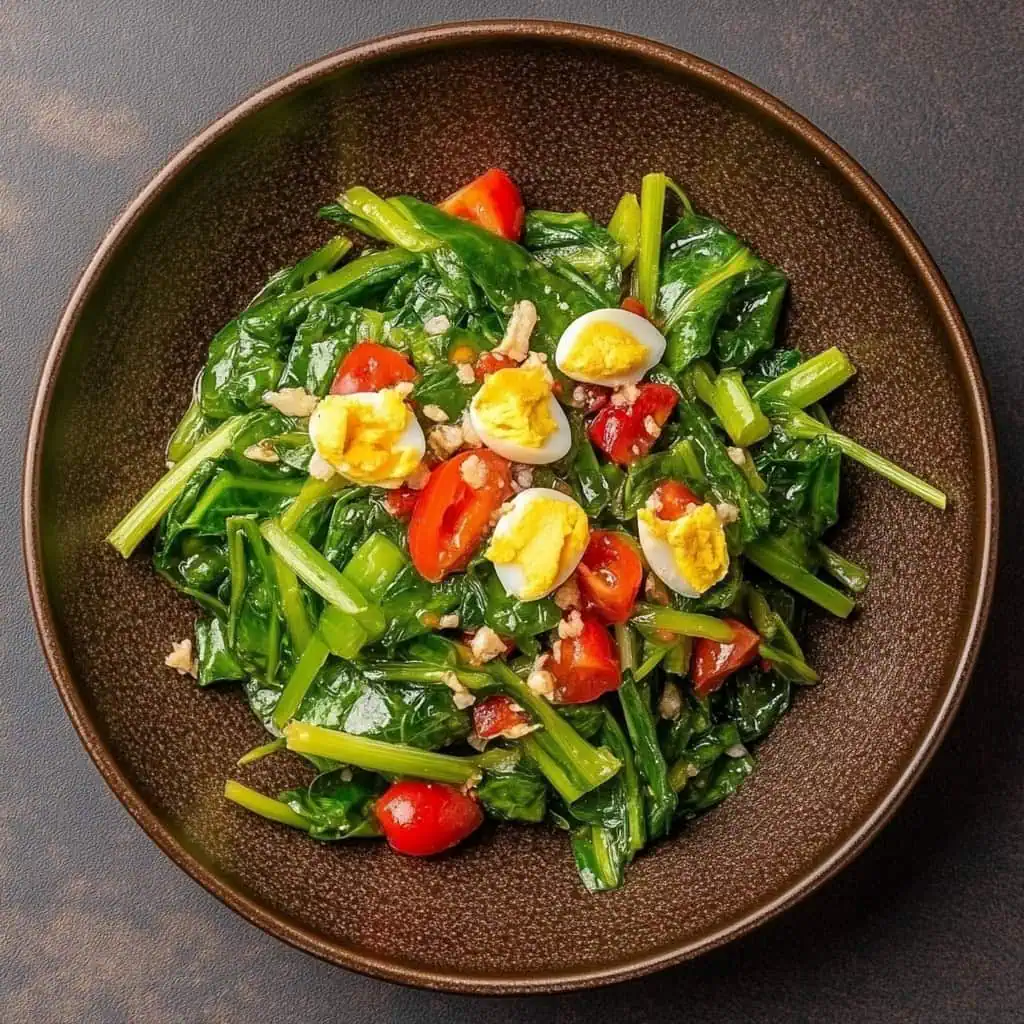


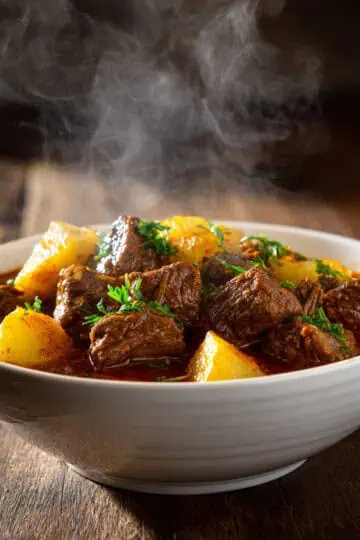


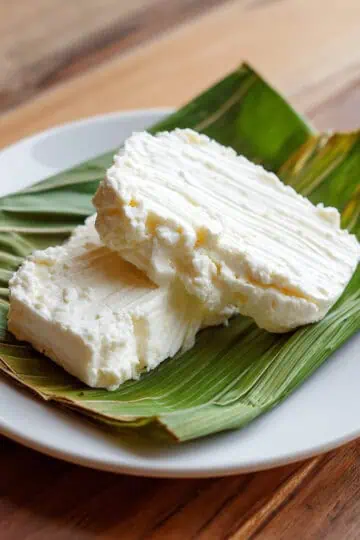
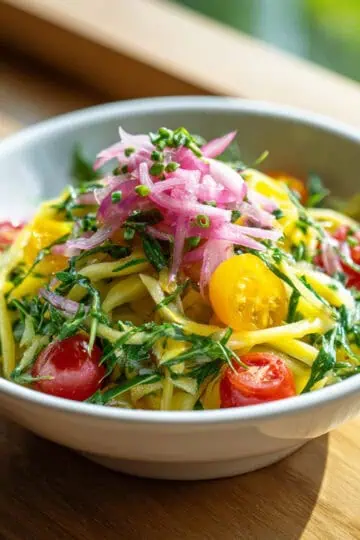

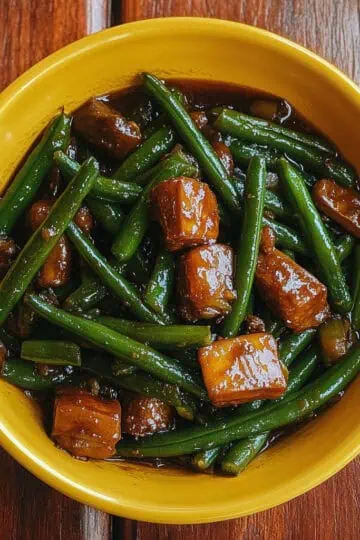
Comments
No Comments